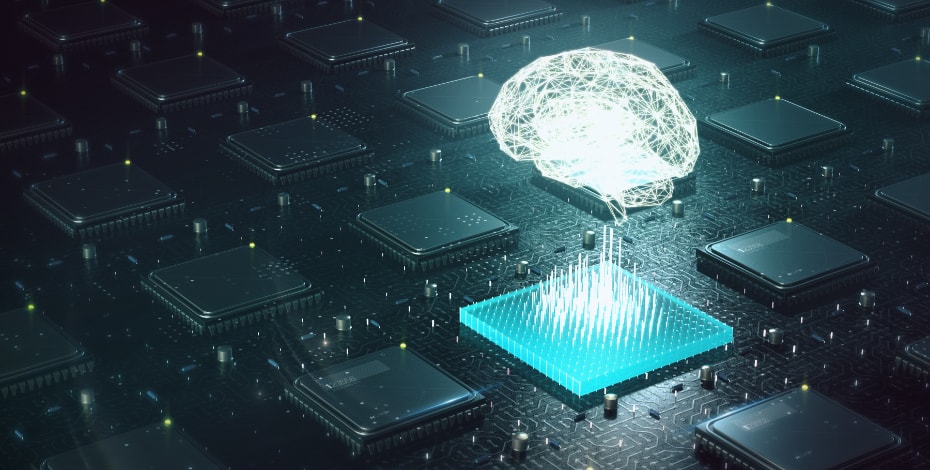
Merging mind and machine

They may sound like something from a science fiction movie, but they are slowly becoming a reality, writes APA Innovation Advisor Barry Nguyen.
A brain–machine interface can be described as a direct communication pathway between a human brain and an external hardware device. Scientific literature in this field started in the 1970s at the University of California, Los Angeles, supported by a US government grant from the National Science Foundation. Original research primarily focused on neuroprosthetics applications aiming to restore damaged hearing, sight and movement.
These interfaces generally require conscious thought inputs, but over time and with advancements in research and development, they will likely become more automated. There can be both invasive and non-invasive systems. The invasive systems require implanting a mechanical device into the brain, and aim to augment, repair and regulate sensory-motor or cognitive functions. The system combines specialised expertise from the fields of computer science, neurosurgery, neuroscience, as well as biomechanical, mechanical and electrical engineering.
The most recent media buzz around this topic is billionaire visionary entrepreneur Elon Musk’s public launch of the startup Neuralink.This company was founded on Musk’s fear of artificial intelligence eventually outpacing human intelligence, potentially leaving our fate to non-human control. Led by Musk, Neuralink is compromised of a group of multi-industry experts, backed by significant venture capital funding (over US$158 million), attempting to develop an implantable brain chip that will merge biological intelligence with artificial intelligence. Musk claims his work will eventually produce a non-invasive solution as the interface to the chip is wireless, so you have no wires poking out of your head. His initial plans for the device (once fully developed and subject to regulatory approvals) would be to assist in the treatment of neurological diseases such as dementia and various movement disorders.
In addition, Mark Zuckerberg expressed interest in ‘telepathic typing’ in 2015. Facebook currently supports the research into developing an external headset that has the ability to transcribe a vocabulary of 1000 words, at 100 words per minute, just by the user thinking about the words.
In early September 2019, The Royal Society (the United Kingdom’s Academy of Sciences) recently released a report ‘iHuman: blurring lines between mind and machine’ (tinyurl.com/y2nnlamx), which is an investigation by leading scientists on the life-changing opportunities and challenges associated with brain–computer interfaces. The report looks at ethical considerations and potential government regulations, particularly given the publicly announced intentions of big tech companies and prominent entrepreneurs.
Arguments in favour of merging the human brain with artificial intelligence (AI):
- brain-machine interfaces can radically transform healthcare with associated social and economic benefits
- neural interfaces are already being researched and used in the world of medicine to treat conditions including stroke, dementia, mental health conditions, obesity and epilepsy
- The Royal Society has strongly advocated the use of neural interfaces in scenarios for injury rehabilitation or to treat a medical condition
- as neural interfaces become more sophisticated over time, there will be an increasing amount of commercial and social impact and research opportunities emerging as a result of progress in this space globally.
Arguments against merging the human brain with AI:
- the Royal Society has much less support for neural interfaces being used to enhance functions such as memory, concentration or physical skills among healthy people
- as neural interfaces become more sophisticated over time, they could open up the risks to abusing such technology with significant negative consequences
- cognitive psychologist and philosopher Susan Schneider recently suggested that merging human brains with artificial intelligence would be suicide for the human mind
- some experts have described humanity as being at risk of self- destruction because of this technology.
Implications for physiotherapists:
- physiotherapists should start being mindful of emerging radical technologies such as brain–machine interfaces and how this may impact their clinical practice and research interests
- physiotherapists could get involved with startups and innovative research projects to contribute to the body of evidence and work of neuroscience-related fields
- physiotherapists may like to contribute to public policy, advocacy and regulation of such technologies by getting involved with government and advisory groups to ensure the safe, effective and ethical implementation of such technologies.
A study in Neurobiology of Disease investigates the clinical application of brain–machine interfaces in the neurorehabilitation of stroke, and provides two new strategies to overcome stroke-related paralysis:
- assistive brain–machine interfaces can provide continuous high- dimensional brain-control robotic devices/functional electrical stimulation to assist patients in activities of daily living
- rehabilitative brain–machine interfaces can facilitate neuroplasticity through enhancing motor learning and recovery.
Email barry.nguyen@australian.physio with any comments or queries regarding this article.
Disclaimer: This material is intended for general information purposes only and does not constitute legal advice or meet the specific needs of your clinical context.
© Copyright 2025 by Australian Physiotherapy Association. All rights reserved.





